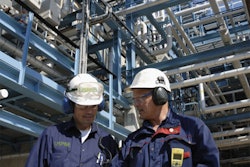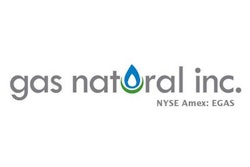Coal combustion residues (CCR), such as fly ash, are generated during the burning of coal. Many projects are contemplating the design of CCR handling systems to comply with EPA regulations and to relieve pressure on existing ash ponds. For each of these projects, one critical aspect of the feasibility is to determine how to store the CCR at the point of production and how to transport it to the new landfill.
Storage options vary based on the type of CCR. There are several transportation options including trucking, curved trough conveyors and pipe conveyors. The design of a CCR handling system is thus complex, requiring significant capital outlay to house the CCR during production and to move it to the transport mechanism no matter how it is transported. For many applications, pipe conveyors can be most beneficial in terms of installation and cost per ton to transport it.
Transport Options to the Landfill
There are generally three different transport options for long distances to new landfills: trucking, curved trough conveyor and pipe conveyor. Trucking offers benefits like high capacity and no installation cost, but has issues including a high transport cost per ton, no enclosure of the material and frequent required maintenance. A curved trough conveyor is advantageous because of its simple installation, low power requirements, unlimited capacity and partial enclosure of the material; however, this solution does not totally enclose the material and cannot navigate sharp curves.
For most applications, the pipe conveyor provides a better option than either trucking or a curved trough conveyor. The pipe conveyor can negotiate shorter vertical and horizontal curves and it encloses the material in both directions of travel. Additionally, the dirty side of the belt always faces inward, and contents are always fully enclosed. This feature means pipe conveyors and their contents pose no risk to the environment by means of spillage. This ensures that pipe conveyors are environmentally safe and compliant with current and proposed EPA regulations. All of these properties make the pipe conveyor an ideal choice for most long routes to new landfills.
The pipe conveyor offers:
- Simple installation, hugs the grade
- Capacity up to 1,500 tons per hour (TPH)
- Total enclosure of the material, and protection from spillage
- Shorter curve radii, and the ability to move over horizontal and vertical curves
- Cost-saving opportunities
- EPA regulation compliance
The economic incentive to install conveying is very high if sufficient CCR volume exists. There is no hard and fast rule to dictate when pipe conveying is best, because there are too many variables such as trucking distance, infrastructure costs and conveyor operating and maintenance costs. But pipe conveying does offer huge savings opportunities. The power cost to convey one ton of material by conveyor is very low – about 10 cents – compared to a range of $2.25 to more than $4.00, all in cost to truck the same amount of CCR across the same distance.
Economic Analysis of Conveying versus Trucking
When it comes to transporting CCR, the key variable is tons per year that need to be transported to the landfill. Volumes range tremendously from several hundred thousand tons per year to more than 3,000,000 tons per year. For higher volume plants, where the landfill is a substantial distance from the plant, conveying makes more sense because the power cost to convey one ton of material by conveyor is very low compared to what it costs to transport the material by truck, typically a $3.00 per ton difference.
The economic incentive to install conveying is even more valuable if sufficient volume exists. The very important question is what kind of capital investment for the installation of the conveyor system can be justified by the cost differential. Figure 1 shows the Net Present Value of the difference between trucking and conveying. This is the difference in costs brought back to present day at a 15% discount rate meaning this is the equivalent to the capital cost that would return 15% over a 20 year project life. For a plant that has 2MM tons per year of CCR, this shows a justifiable capital cost for conveying of $35,000,000. There is no hard and fast rule because there are too many variables to consider such as trucking distance, infrastructure costs and operating and maintenance costs the plant wishes to apportion to the conveying system.
System Design Overview for Utility Company
A utility company recently finished its CCR dewatering, storage and transportation system for its power station, choosing a pipe conveyor because of many of the stated benefits. The plant houses systems for gypsum dewatering and storage, fly ash storage and conditioning, and bottom ash collection and dewatering areas. After each waste product is readied for transport, the material is put on conventional conveyors to move it to the tail end of the overland pipe conveyor for comingled transport to the landfill.
The footprint required for this type of system is quite large because the gypsum must be dewatered in a dewatering building and then transported to a separate storage building housing an overhead stacking system and a portal reclaimer. The fly ash is stored in two concrete silos with conditioners located under each silo. The footprint of these silos is relatively small compared to the gypsum handling facilities. The bottom ash design has a separate building housing the submerged flight conveyors which feed another enclosed area where the bottom ash is placed on concrete pads for further dewatering. The plant is designed with plenty of contingency storage room for each material, with a system capacity of 1,200 short tons per hour (stph).
The fly ash and bottom ash are moved to the loading end of the pipe conveyor on the same conveyors. The gypsum is moved to the loading end of the pipe conveyor on a separate reclaim conveyor. The system also has an emergency truck load out building and another truck unloading feeder to move trucked material onto the pipe conveyor.
The actual route has steep inclines and many curves. Any future project will want to achieve a low cost per ton to transport the waste and build sufficient backup or storage volume to assure reliable operation and a system with enough capacity to assure that all waste can be moved during daylight hours.
The pipe conveyor moves the waste to the discharge tower located on the edge of the landfill. It can move each of the three waste streams independently or comingled. The conveyor runs approximately 7,800 ft. – about 1.5 miles – and the final elevation of the discharge is approximately 400 ft. higher in elevation than the loading zone. The grade is undulating and some areas are very steep. The pipe conveyor was able to follow the grade in many cases, which reduced civil works and bent heights.
Overall, the pipe conveyor is working well and serves as a good option for any company transporting CCR to landfills. Pipe conveyors are an efficient and cost-effective method of transporting CCR across a long distance from storage facilities to new landfills. While trucking remains an option, the economic payback to invest the capital in a conveying system can return millions of dollars in savings.























